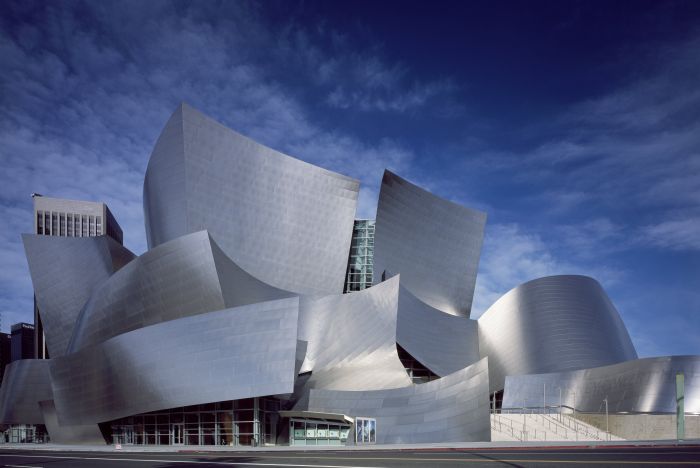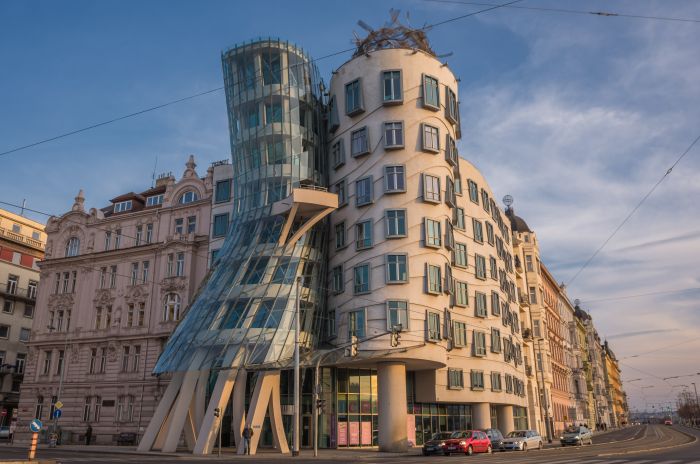Exploring Gehry Architecture: A Dive into Frank Gehrys Unique Design Style
Delving into gehry architecture, this introduction immerses readers in a unique and compelling narrative, providing insights into the innovative architectural style of Frank Gehry. From his groundbreaking designs to his use of unconventional materials, Gehry's work continues to captivate and inspire architects and enthusiasts alike.
As we unravel the intricacies of Gehry's architectural philosophy and examine his most iconic creations, we uncover a world where creativity knows no bounds and where buildings become works of art.
Introduction to Gehry Architecture
Frank Gehry is a renowned architect known for his distinctive and innovative approach to design. His architectural style is characterized by the use of unconventional materials, organic shapes, and dynamic forms that challenge traditional architectural norms. Gehry's philosophy revolves around creating buildings that not only serve their function but also engage with their surroundings in a visually striking and thought-provoking manner.
Key Characteristics of Gehry’s Design
- Use of unconventional materials such as titanium, glass, and steel to create visually striking facades.
- Exploration of organic shapes and forms inspired by nature, resulting in dynamic and fluid structures.
- Integration of technology and digital design tools to push the boundaries of architectural possibilities.
- Focus on creating buildings that interact with their environment and engage with the surrounding urban fabric.
Notable Gehry-Designed Buildings
- Guggenheim Museum Bilbao in Spain - One of Gehry's most iconic designs, known for its titanium-clad exterior and innovative form.
- Walt Disney Concert Hall in Los Angeles, USA - A striking concert hall featuring sweeping curves and stainless steel panels.
- Fondation Louis Vuitton in Paris, France - A cultural center with a sail-like structure made of glass and steel, showcasing Gehry's signature style.
Materials and Construction Techniques

Gehry's architectural projects are known for their innovative use of materials and construction techniques, pushing the boundaries of traditional design and construction methods.One of the key materials Gehry frequently incorporates into his structures is titanium. This lightweight yet durable metal allows for unique shapes and forms to be created, giving Gehry's buildings their distinctive, sculptural appearance.
The titanium panels are often curved or twisted, adding a dynamic quality to the overall design.In addition to titanium, glass is another material commonly used by Gehry. Large, reflective glass surfaces are often juxtaposed with the titanium panels, creating a striking visual contrast.
The transparency of glass also allows natural light to penetrate the interior spaces, enhancing the overall experience of the building.Steel is another staple material in Gehry's projects, providing structural support and stability to the complex forms he envisions. Steel beams and columns are often exposed, adding an industrial aesthetic to the overall design.
Gehry's ability to manipulate steel into intricate shapes and angles showcases his mastery of construction techniques.
Innovative Construction Techniques
Gehry is known for his innovative construction techniques that challenge traditional building methods. One of his signature approaches is the use of digital design tools, such as computer-aided design (CAD) software and parametric modeling, to create complex, geometric forms that would be difficult to achieve manually.Another technique Gehry employs is the use of 3D printing technology to fabricate custom components for his projects.
This allows for greater precision and customization in the construction process, enabling Gehry to realize his intricate designs with accuracy.Furthermore, Gehry often collaborates closely with engineers and fabricators to develop new construction methods specific to each project. By pushing the boundaries of what is possible with materials and construction techniques, Gehry continues to innovate and inspire the world of architecture.
Influence of Deconstructivism
Deconstructivism, a movement that emerged in the late 20th century, has had a significant impact on Frank Gehry's architectural style. Gehry's approach to deconstructivism involves the fragmentation and distortion of architectural elements, creating unconventional forms that challenge traditional ideas of structure and space.
Comparison with other architects
- Gehry's use of deconstructivism can be compared to the work of Zaha Hadid, another prominent architect of the movement. Both Gehry and Hadid incorporate dynamic and fluid forms in their designs, pushing the boundaries of what is considered possible in architecture.
- However, Gehry's approach often involves a more playful and whimsical aesthetic compared to the more futuristic and angular designs of Hadid.
Manifestation in Gehry’s buildings
- Walt Disney Concert Hall:The undulating stainless steel panels of the Walt Disney Concert Hall in Los Angeles exemplify Gehry's deconstructivist style, creating a sense of movement and fluidity in the building's exterior.
- Guggenheim Museum Bilbao:The Guggenheim Museum in Bilbao, Spain, is another prime example of deconstructivism in Gehry's work, with its curved and fragmented forms that challenge traditional architectural norms.
- Experience Music Project:Located in Seattle, Washington, the Experience Music Project features Gehry's signature use of unconventional shapes and materials, showcasing the essence of deconstructivism in architecture.
Iconic Gehry Buildings
Frank Gehry's iconic buildings, such as the Guggenheim Museum Bilbao, are renowned for their groundbreaking design concepts and innovative construction techniques. These structures have had a profound impact on the architectural world, pushing boundaries and redefining what is possible in modern architecture.
Gehry's buildings not only stand out for their unique and avant-garde aesthetics, but also for the way they interact with their surrounding environments, creating a harmonious relationship between the built environment and nature.
Design Concepts behind Guggenheim Museum Bilbao
The Guggenheim Museum Bilbao, completed in 1997, is a prime example of Gehry's deconstructivist style, characterized by fragmented forms and unconventional materials. The design concept behind this iconic building was to create a dynamic and fluid structure that would reflect the industrial history of the city while also embracing its future as a cultural hub.
The use of titanium panels and curvilinear shapes gives the museum a sense of movement and energy, drawing visitors in and inviting exploration.
Impact on the Architectural World
Gehry's iconic buildings, including the Guggenheim Museum Bilbao, have significantly influenced the architectural world by challenging traditional norms and inspiring a new generation of architects to think outside the box. These structures have become symbols of innovation and creativity, setting new standards for contemporary architecture and pushing the boundaries of what is possible in terms of form, materiality, and construction techniques.
Interaction with Surrounding Environments
One of the key features of Gehry's buildings is their ability to seamlessly integrate with their surrounding environments, creating a dialogue between the built space and the natural world. The Guggenheim Museum Bilbao, for example, is strategically positioned along the Nervion River, with its reflective titanium facade mirroring the water and sky, blending the boundaries between architecture and nature.
This approach not only enhances the visual appeal of the buildings but also fosters a sense of connection and harmony with the landscape.
Closing Summary

In conclusion, Gehry's architecture transcends traditional boundaries, pushing the limits of design and redefining the relationship between structure and space. His impact on the architectural landscape is undeniable, leaving a lasting legacy that continues to shape the way we perceive and experience built environments.
FAQ Overview
What materials does Gehry commonly use in his architectural projects?
Gehry is known for using unconventional materials such as titanium, glass, and steel in his structures, creating unique and eye-catching designs.
How does Gehry incorporate deconstructivism into his buildings?
Gehry's approach to deconstructivism involves breaking down traditional design norms, playing with form and structure to create visually striking and unconventional architecture.
Which Gehry-designed building is considered the most iconic?
The Guggenheim Museum Bilbao is often cited as one of Gehry's most iconic buildings, showcasing his innovative design concepts and architectural prowess.




